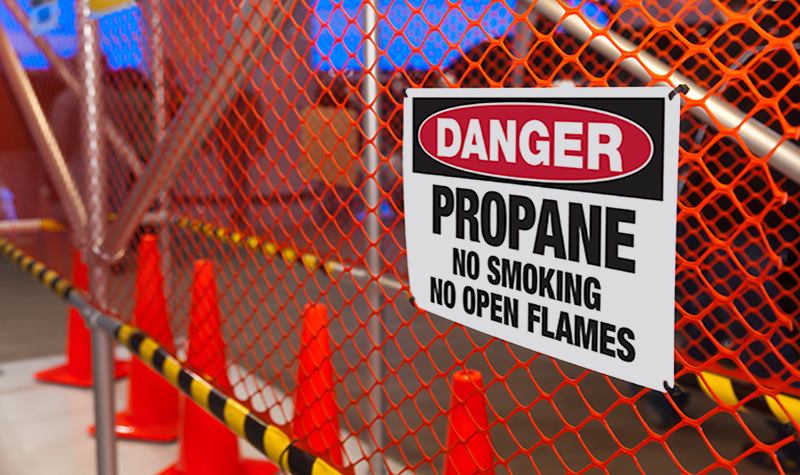Every facility has signage needs and requirements, both to comply with standards and regulations and for generally housekeeping to keep employees and visitors safe and informed. Below we will take a look at the top 10 types of signs needed for OSHA compliance.
- Exit and Evacuation Signs – According to the Occupational Safety and Health Administration or OSHA, emergency exits and evacuation pathways must be clearly marked. In addition, a hallway or doorway that could be confused for an exit should be marked as NOT AN EXIT.
- Fire Signs – Fire equipment like extinguishers, fire alarms and fire hose cabinets should be identified with a sign. This makes them easy to access when there is an emergency situation.
- Electrical Arc Flash Hazard Signs – OSHA requires that signs indicate high voltage regions and battery charging places. This makes for a safe working space around live, electrical equipment.
- First Aid Signs – There should be signs indicating where first aid supplies and equipment are located so they are readily available in the case of an injury. These signs would indicate first aid stations, eye wash, safety showers, and Automated External Defibrillators (AED).
- Flammable/Combustible Signs – OSHA indicates that containers with combustible or flammable liquids, vapors, or materials should be visibly marked. This includes Danger – No Smoking signs, Danger – No Open Flames sign, and Flammable signs.
- Personal Protection Signs – OSHA recommends companies remind their employees and visitors to wear the appropriate PPE in danger zones. There are PPE reminder signs for eye, hearing, foot and head protection.
- Hazardous Area Signs – According to OSHA, any hazardous spaces should have the appropriate signs posted. These signs indicate potential hazards, unsafe practices or the correct procedure in a hazardous area. Hot signs indicate extreme heat, biohazard signs indicate a zone or item is contaminated, and radiation signs mark radiation sectors and how to stay safe within them.
- Confined Space Signs – Use signs to indicate confined spaces, mark that authorized permits are required to enter, and instructions for entering these spaces.
- Machine and Equipment Signs –Signage should be used to alert employees of danger in a machine operating section that could result in injury or broken equipment. Some examples would be a Pinch Point sign alerting employees where hands should stay clear of moving machinery and Operation Warning signs that make the viewer aware of machine guard requirements, emergency shut downs, and automatic start-ups.
- Slip, Trip, and Fall Signs – Give direction to employees in a place that could possibly cause a fall. Post signs in spaces such as steps, uneven floors and slippery floors.
To purchase safety signs for your facility visit seton.com
Contributed by Elizabeth Cotnoir, Merchandising Associate at Seton.

